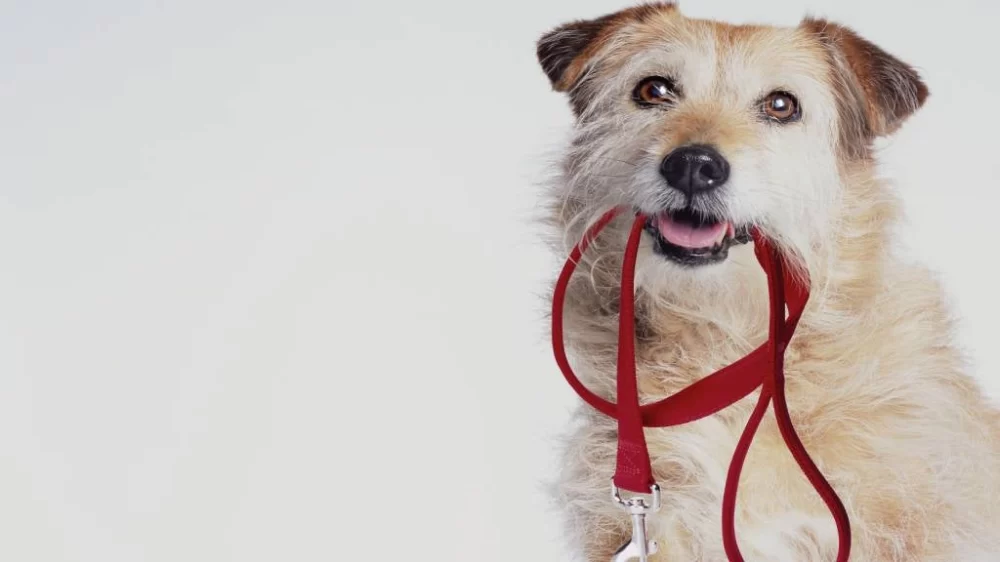How to Train a Dog to Walk Without Pulling: Tips and Techniques for Pet Owners
When I first adopted Max, my dog, I was excited to take him on walks. However, I quickly learned that he had a tendency to pull on the leash, making our walks a challenge. As much as I loved our daily outings, I soon realized that I couldn’t continue letting Max drag me along the sidewalks. I needed to find a way to train him to walk calmly beside me. If you’re in a similar situation and struggling with a dog that pulls on walks, you’re not alone. In this article, I’ll share the strategies and techniques that worked for me, helping Max learn to walk politely without pulling on the leash.
1. Understanding Why Dogs Pull on the Leash
Before I could train Max to stop pulling, I needed to understand why he was doing it in the first place. Many dogs pull because they are excited, curious, or simply because they haven’t been trained to walk politely on a leash. Max, for instance, would pull because he was eager to explore his surroundings and get to his destination faster. In his mind, pulling was the fastest way to get where he wanted to go.
It’s important to remember that pulling is a natural behavior for many dogs. It’s something that they do instinctively, especially when they are excited. Understanding this allowed me to approach the training process with more patience and consistency. I needed to teach Max that walking calmly beside me was the best way to get to our destination. Through consistent training, I could help him learn that pulling would not get him anywhere faster, while walking calmly would lead to rewards.
2. Use Positive Reinforcement to Reward Calm Walking
The most effective technique I used to train Max to stop pulling was positive reinforcement. Positive reinforcement means rewarding your dog for good behavior rather than punishing them for bad behavior. Every time Max walked calmly beside me without pulling, I would reward him with praise, treats, or a quick play session. This helped Max understand that calm behavior during walks led to positive outcomes.
In the beginning, Max would pull, and I would stop walking immediately. Once he calmed down and the leash slackened, I would start walking again. This technique, known as the “Stop-and-Go” method, helped Max understand that pulling would cause the walk to stop, while walking calmly would allow us to continue our journey. I reinforced this with treats and praise to further encourage good behavior.
3. Teach the “Loose Leash Walking” Command
In addition to positive reinforcement, I found it helpful to teach Max a specific command for walking without pulling. The “loose leash walking” command was a game-changer in our training. Whenever Max began pulling, I would gently stop, redirect his attention, and say “let’s go” as I started walking again. This verbal cue helped Max associate walking calmly with a specific command, reinforcing the behavior I wanted to see.
Every time Max walked with a slack leash, I would reward him immediately with a treat and praise. This helped him understand that the behavior I wanted was walking beside me without tension on the leash. It took some time, but with consistency, Max began to understand the “loose leash walking” command and started walking more calmly on his own.
4. Use the Right Equipment: Harnesses vs. Collars
Choosing the right equipment played a big role in helping Max learn to walk without pulling. Initially, I used a standard collar, but I quickly realized that Max’s pulling was putting too much pressure on his neck. This could cause discomfort and even injury over time. I decided to try a harness instead, which distributes the pressure more evenly across his body and prevents strain on his neck and throat.
There are many types of harnesses available, from standard front-clip harnesses to no-pull harnesses. Front-clip harnesses, in particular, are great for dogs that tend to pull because they encourage the dog to turn back toward you when they pull. I found that using a front-clip harness helped Max focus more on walking beside me, rather than pulling ahead. The right equipment can make a huge difference in the success of your training efforts.
5. Consistency is Key: Train Regularly and Be Patient
One of the most important lessons I learned in training Max was the need for consistency. Training Max to walk without pulling didn’t happen overnight. It took several weeks of daily practice to get him to the point where he would walk calmly without pulling. But through consistency and patience, Max gradually learned the behavior I wanted.
It’s crucial to stick to a consistent routine when training your dog. Set aside time each day for training sessions, and be consistent with your commands and rewards. Even if your dog struggles at first, don’t get discouraged. Dogs need time to learn, and the more consistent you are with your training, the faster they’ll understand what’s expected of them. Patience and repetition are key when it comes to teaching your dog to walk politely on a leash.
6. Take Breaks and Avoid Overwhelming Your Dog
During our training sessions, I found that taking breaks was important to keep Max from getting too overwhelmed. If Max was pulling excessively or getting too excited, I would stop the walk and give him a chance to calm down. This prevented him from becoming overstimulated and allowed him to refocus. Over time, Max learned that pulling would cause the walk to stop, and calm behavior would result in a rewarding and uninterrupted experience.
It’s important to listen to your dog’s body language during walks. If they start to pull excessively or show signs of exhaustion, it’s okay to take a break. Not only does this help your dog stay calm, but it also ensures that the training process remains positive and enjoyable for both of you.
7. Gradually Increase Distractions During Walks
As Max improved with his walking skills, I started adding distractions to our training sessions. At first, we practiced walking in quiet areas with few distractions. But as Max became more comfortable with walking without pulling, I gradually introduced him to busier environments. We started walking near other dogs, people, and traffic, and I used the same loose-leash walking commands to maintain control.
Introducing distractions in a gradual manner helped Max learn how to stay focused on me, even in more stimulating environments. This process took time, but the more we practiced, the better Max became at ignoring distractions and walking calmly beside me. This also helped build his confidence and made walks more enjoyable for both of us.












